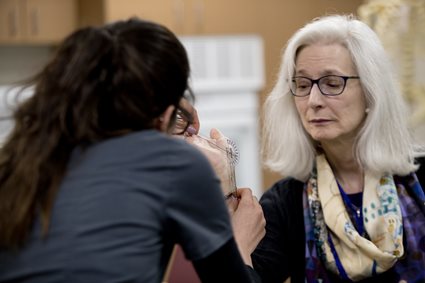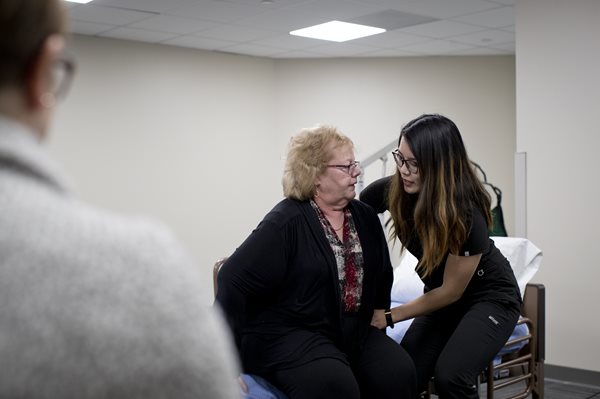 Occupational therapy (OT) has been consistently ranked in both top and recession-proof job lists. Occupational therapists (OTs) are professionals who help people across the lifespan do the things they want and need to do through the therapeutic use of daily activities (occupations). Occupational therapy practitioners enable individuals of all ages to live life to its fullest by helping them promote health, and prevent—or live better with—injury, illness, or disability. The Bureau of Labor Statistics projects occupational therapist employment growth of 27 percent between 2014 and 2024, adding 30,400 more professionals to the 114,600 existing jobs in this field (AOTA, 2017).
Occupational therapy (OT) has been consistently ranked in both top and recession-proof job lists. Occupational therapists (OTs) are professionals who help people across the lifespan do the things they want and need to do through the therapeutic use of daily activities (occupations). Occupational therapy practitioners enable individuals of all ages to live life to its fullest by helping them promote health, and prevent—or live better with—injury, illness, or disability. The Bureau of Labor Statistics projects occupational therapist employment growth of 27 percent between 2014 and 2024, adding 30,400 more professionals to the 114,600 existing jobs in this field (AOTA, 2017).
In the Field
Practitioners working in this field have professional opportunities with a wide range of clients who have disabilities or are at risk for disabilities. OTs can assist children with disabilities to participate more successfully in school activities and help them develop necessary play and self-help skills. They can also help adults regain skills after an injury and provide support as they transition into life with new physical and cognitive changes. OTs can also work with the elderly who may have been affected by illness, memory loss, or injury; practitioners help them meet common everyday challenges and continue to participate in roles and activities meaningful to them.
Facilitating an individual’s increased independence and improved quality of life is a key aspect of the profession. Additionally, recent research suggests OT can play an important role in prevention, reduced hospital readmissions, and the promotion of health and wellness.
OTs have the flexibility of working in a host of different environments including schools, hospitals, community-based settings, or within the client’s home. Using a holistic approach, OTs can customize environments – at home, at school, or at work – for each individual. With an aging population, an increased survival rate for premature infants, and the availability of better medical interventions, the future for OTs looks bright.
The need for OTs is especially expected to increase as baby boomers age and strive to maintain their independence and physical health. As the public gains a better understanding of how an OT can enrich their lives and help them meet their occupationally-based needs at any age or stage of life, opportunities for members of this profession are expected to continue to expand.

OT Program at Salus
Salus University’s Occupational Therapy students are integrated into a community of professional graduate students dedicated to become caring and competent healthcare professionals, who value the unique synergies of an interprofessional approach. Salus provides its OT students with diverse clinical experiences that emphasize various specializations including vision rehabilitation, emerging practice and community-based settings, and traditional placements.
The University’s OT program offers both professional and post-professional programs. The professional program is a Master of Science degree in Occupational Therapy (MSOT), which emphasizes interdisciplinary perspectives, critical reasoning, the value of occupation, and professional development. As a result of the stellar experiences and education provided to its students, the National Board for Certification in Occupational Therapy (NBCOT) Certification Exam pass rates for Salus students has been 100% every year since the program’s launch in 2013. After successful completion of this exam, the individual will be a registered occupational therapist (OTR).
The OT program also offers two post-professional degrees. Both programs are primarily online. The Doctorate of Occupational Therapy (OTD) degree is designed for licensed OTs to become advanced content experts, future leaders, or assume teaching roles in higher education. The second is a Specialty Track Certificate, which provides advanced content and expertise for OTs or those in related professions in three selected areas: Health and Wellness, Remedial Vision Rehabilitation, and Low Vision Rehabilitation.